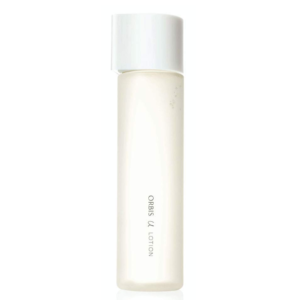目次
The depreciable basis of the new property is the adjusted basis of the exchanged or involuntarily converted property plus any additional amount you paid for it. The election, if made, applies to both the acquired property and the exchanged or involuntarily converted property. This election does not affect the amount of gain or loss recognized on the exchange or involuntary conversion. You also generally continue to use the longer recovery period and less accelerated depreciation method of the acquired property. You figure the depreciation rate under the SL method by dividing 1 by 5, the number of years in the recovery period.
- For the inclusion amount rules for a leased passenger automobile, see Leasing a Car in chapter 4 of Pub.
- To find an LITC near you, go to TaxpayerAdvocate.IRS.gov/about-us/Low-Income-Taxpayer-Clinics-LITC or see IRS Pub.
- The adjustment is the difference between the total depreciation actually deducted for the property and the total amount allowable prior to the year of change.
- Two terms that often come up in discussions regarding asset management and tax planning are book depreciation and tax depreciation.
Therefore, you must use the mid-quarter convention for all three items. If there are no adjustments to the basis of the property other than depreciation, your depreciation deduction for each subsequent year of the recovery period will be as follows. In July 2022, the property was vandalized and they had a deductible casualty loss of $3,000. Sandra and Frank must adjust the property’s basis for the casualty loss, so they can no longer use the percentage tables. Their adjusted basis at the end of 2022, before figuring their 2022 depreciation, is $11,464.
Features of Depreciation
There is less than 1 year remaining in the recovery period, so the SL depreciation rate for the sixth year is 100%. You multiply the reduced adjusted basis ($58) by 100% to arrive at the depreciation deduction for the sixth year ($58). You must apply the table rates to your property’s unadjusted basis each year of the recovery period. Unadjusted basis is the same basis amount you would use to figure gain on a sale, but you figure it without reducing your original basis by any MACRS depreciation taken in earlier years. However, you do reduce your original basis by other amounts, including the following.
You must depreciate MACRS property acquired by a corporation or partnership in certain nontaxable transfers over the property’s remaining recovery period in the transferor’s hands, as if the transfer had not occurred. You must continue to use the same depreciation method and convention as the transferor. You can depreciate the part of the property’s basis that exceeds its carryover basis (the transferor’s adjusted basis in the property) as newly purchased MACRS property. In January, you bought and placed in service a building for $100,000 that is nonresidential real property with a recovery period of 39 years. You use GDS, the SL method, and the mid-month convention to figure your depreciation. Figure your depreciation deduction for the year you place the property in service by dividing the depreciation for a full year by 2.
What is a book to tax reconciliation?
For the year of the adjustment and the remaining recovery period, you must figure the depreciation deduction yourself using the property’s adjusted basis at the end of the year. Instead of using either the 200% or 150% declining balance method over the GDS recovery period, you can elect to use the straight line volunteer contract agreement method over the GDS recovery period. Make the election by entering “S/L” under column (f) in Part III of Form 4562. On February 1, 2022, the XYZ Corporation purchased and placed in service qualifying section 179 property that cost $1,080,000. It elects to expense the entire $1,080,000 cost under section 179.
AccountingTools
Assume the same facts as in Example 1 under Property Placed in Service in a Short Tax Year, earlier. The Tara Corporation’s first tax year after the short tax year is a full year of 12 months, beginning January 1 and ending December 31. The first recovery year for the 5-year property placed in service during the short tax year extends from August 1 to July 31. Tara deducted 5 months of the first recovery year on its short-year tax return.
Book depreciation, used in financial reporting, follows accounting principles to spread the cost of an asset over its useful life. In contrast, tax depreciation, guided by tax laws, focuses on the allocation of an asset’s cost for tax purposes, often using different methods and timelines. These differing approaches can lead to significant variations in reported earnings and taxable income. This article seeks to clarify the distinctions between book and tax depreciation, elucidating the methods of their calculation and their respective impacts on a business’s financial well-being and tax responsibilities. Continue reading for insightful information on these essential accounting procedures and their influence on financial decision-making. To figure your MACRS depreciation deduction for the short tax year, you must first determine the depreciation for a full tax year.
Figuring Depreciation Under MACRS
To figure your depreciation deduction under MACRS, you first determine the depreciation system, property class, placed in service date, basis amount, recovery period, convention, and depreciation method that apply to your property. You can figure it using a percentage table provided by the IRS, or you can figure it yourself without using the table. Dean does not have to include section 179 partnership costs to figure any reduction in the dollar limit, so the total section 179 costs for the year are not more than $2,700,000 and the dollar limit is not reduced. However, Dean’s deduction is limited to the business taxable income of $80,000 ($50,000 from Beech Partnership, plus $35,000 from Cedar Partnership, minus $5,000 loss from Dean’s sole proprietorship).
Tax and accounting regions
Treat property as placed in service or disposed of on this midpoint. To determine if you must use the mid-quarter convention, compare the basis of property you place in service in the last 3 months of your tax year to that of property you place in service during the full tax year. If you have a short tax year of 3 months or less, use the mid-quarter convention for all applicable property you place in service during that tax year. You must make the election on a timely filed return (including extensions) for the year of replacement. The election must be made separately by each person acquiring replacement property.
The S corporation allocates its deduction to the shareholders who then take their section 179 deduction subject to the limits. A partner must reduce the basis of their partnership interest by the total amount of section 179 expenses allocated from the partnership even if the partner cannot currently deduct the total amount. If the partner disposes of their partnership interest, the partner’s basis for determining gain or loss is increased by any outstanding carryover of disallowed section 179 expenses allocated from the partnership. Step 6—Using $1,098,000 (from Step 5) as taxable income, XYZ figures the actual section 179 deduction.
The accounting standards used for tax depreciation and book depreciation can also be different. Tax depreciation is typically calculated using the Internal Revenue Code, while book depreciation is typically calculated using Generally Accepted Accounting Principles (GAAP). The accounting standards used will depend on the type of asset being depreciated and the objectives of the business. The basis of tax depreciation is rigid rules that allow depreciation based on the type of assets regardless of the life or usage of an asset.
















